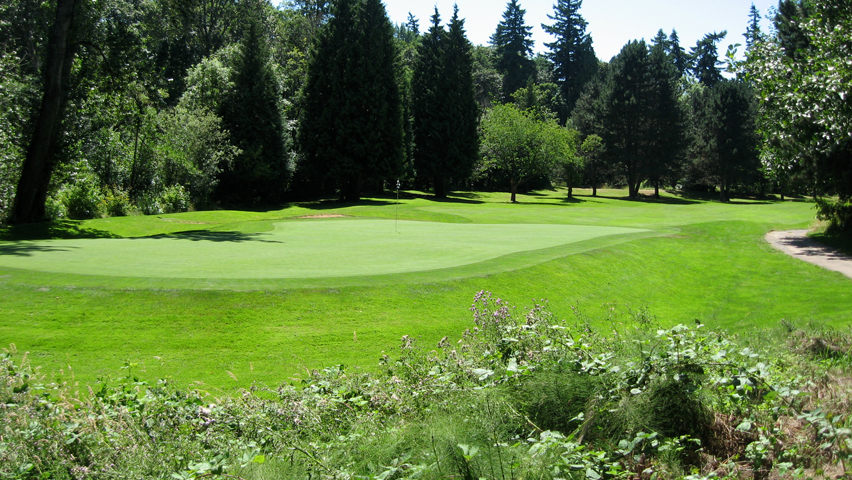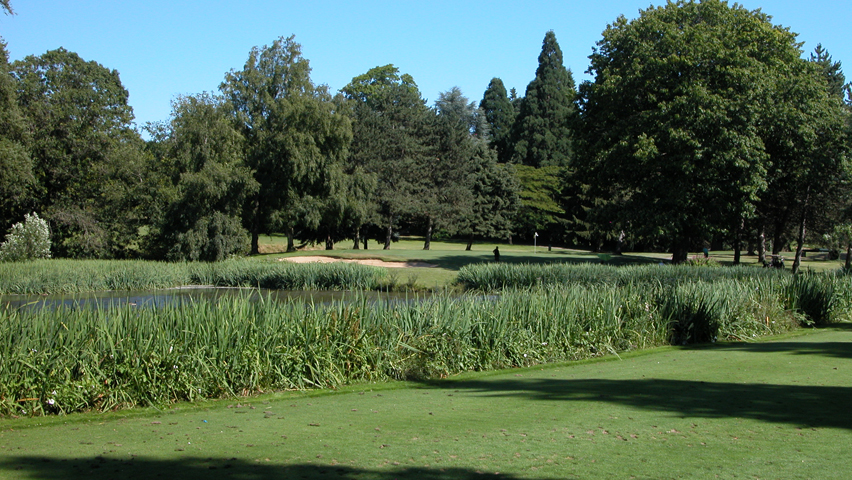Eastmoreland Golf Course, in the heart of SE Portland’s Eastmoreland District, is a historic golf course that should be played at least once by anybody that enjoy’s the game. Combined, the 18 holes at Eastmoreland provide a very enjoyable test of all your golf skills. The natural beauty, reasonable rates and ideal location in the Portland area make Eastmoreland Golf Course a great value for the average summertime golfer. It appears that Portland Parks and Recreation is also interested in appealing to the more experienced golfer by making continuous improvements to the condition and overall play of the course. Similar to most municipal courses, be warned that golfers of all skill levels enjoy the affordable rates here in the peak summer months. This means the average time of a weekend round will certainly rise with the quality of the weather, and players are less likely to worry about their effect on course conditions.
Some very recent improvements that have been made to one of Portland’s most popular golf courses has allowed local golfers of any skill level to enjoy a naturally beautiful course within the city at reasonable public rates. Most notably, the removal of many large and bothersome trees as well as better maintenance of the ones that still line the fairways has allowed for a more player friendly course. The greens at Eastmoreland have always been well maintained and are of high quality. Now it appears that an emphasis has been placed on creating greener fairways and more consistent rough. Players will be pleasantly surprised with the number of unique holes on this historic course. Completed in 1918, Eastmoreland is the oldest municipal course in Portland and is also the second oldest course in Oregon. It is common for older golf courses to feature many repetitive holes and what golfers now days would refer to as a plain layout. Eastmoreland however, was designed with creative features and holes that are even more impressive knowing that not a lot of land was moved during its original construction. The true beauty of this course lies in the various immense trees, dense green vegetation and radiant seasonal flowers that we appreciate so much here in the Northwest.
Playing Eastmoreland Golf Course
After opening up your round with a couple of straightforward par 4’s, the remaining holes on your front nine leave you with options off the tee and challenge you to both find the fairway and avoid greenside trouble. Staying in the short grass is critical on this golf course. Although many large trees that used to be in play have recently been removed and the rough is not overly deep, the holes play tight and being straight off the tee will benefit golfers much more than length in terms of scoring well here. There are two very friendly par-5’s on the front nine that can be scored on if played from the fairway. Playing for par on the long par 3’s as well as making a few putts on the large true greens can result in some very good scores on the front nine.
After another good looking, yet short par-4 10th , things become a bit more challenging on the back nine. Holes like 11, 13 and 16 will play much easier for you on your second time around the course. After viewing these holes in their entirety you will be able to better plan your strategy off the tee. The par-5 13th specifically calls for a layup of 200-220 yards depending on your choice of tee box. The two par-3’s on the back nine are the most scenic holes on the course. Both holes have gorgeous views of the Crystal Springs Lake shared by the golf course and the Rhododendron Test Gardens. Although both holes have forced carries over water, you may find that these two par 3’s are much more scoreable than those on the front nine. There are many enjoyable holes with features like the lake and Johnson Creek on the back nine, but staying out of these natural hazards off the tee will help you avoid frustration and allow you to take advantage of simple approach shots to large greens during your back nine.





